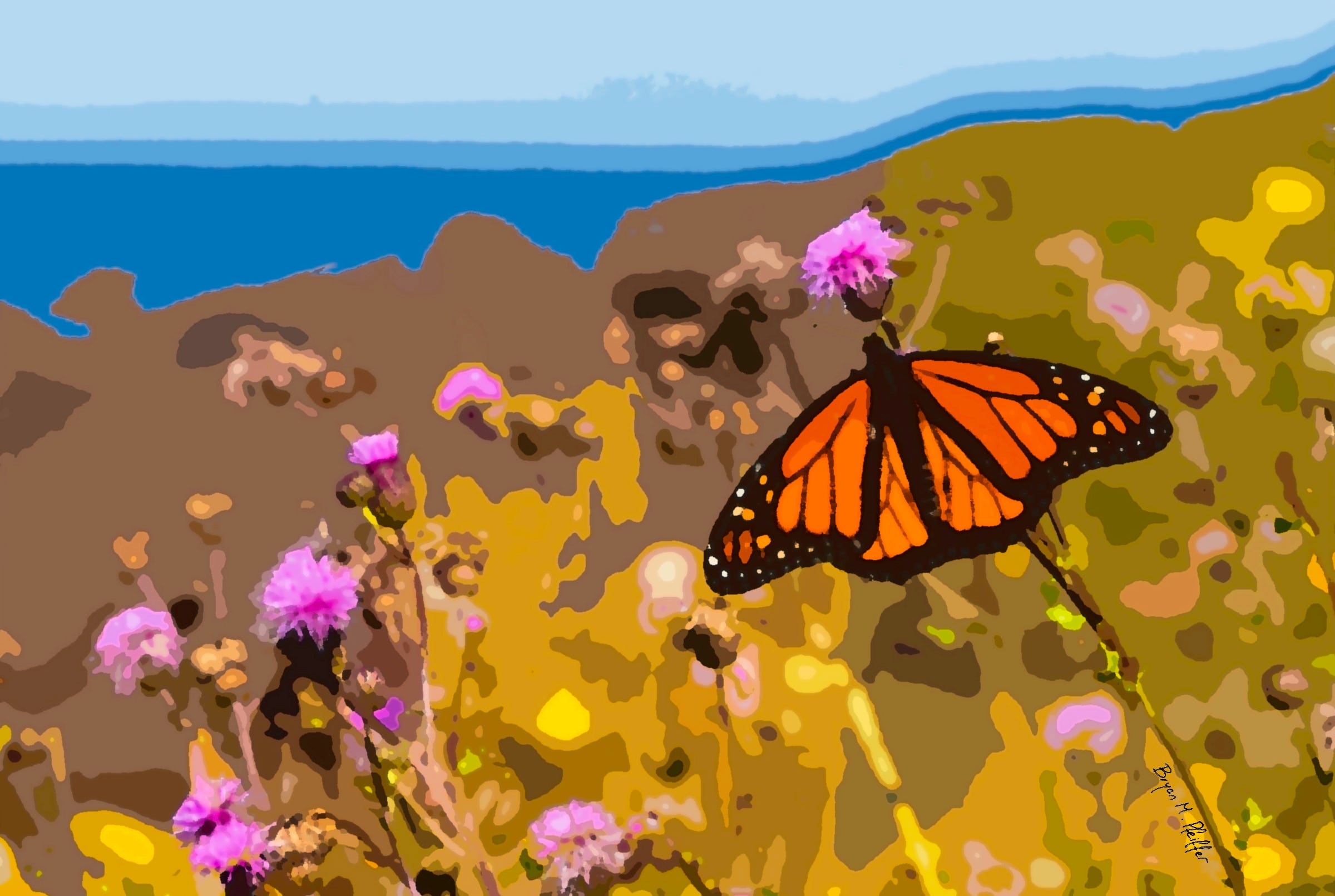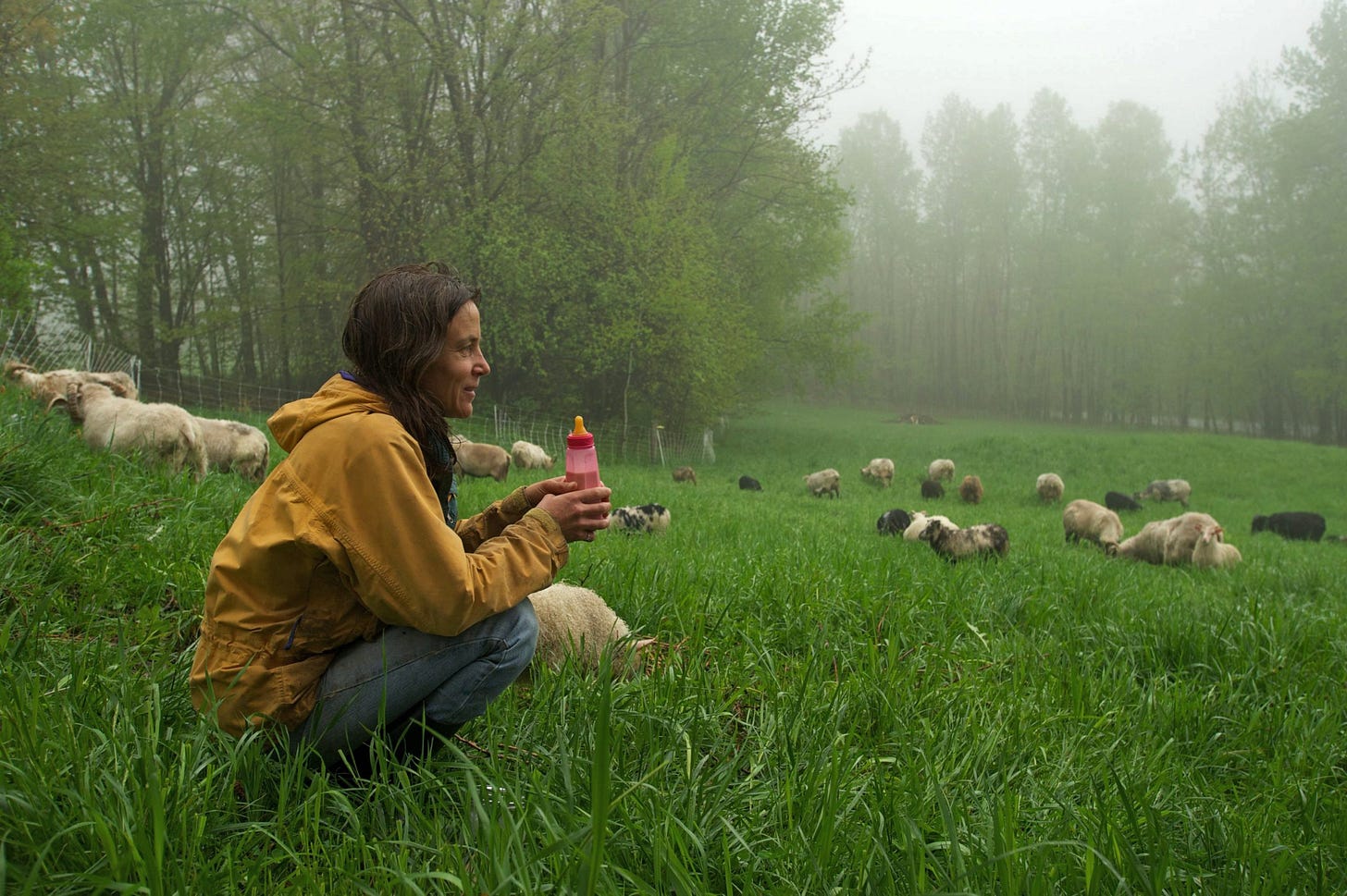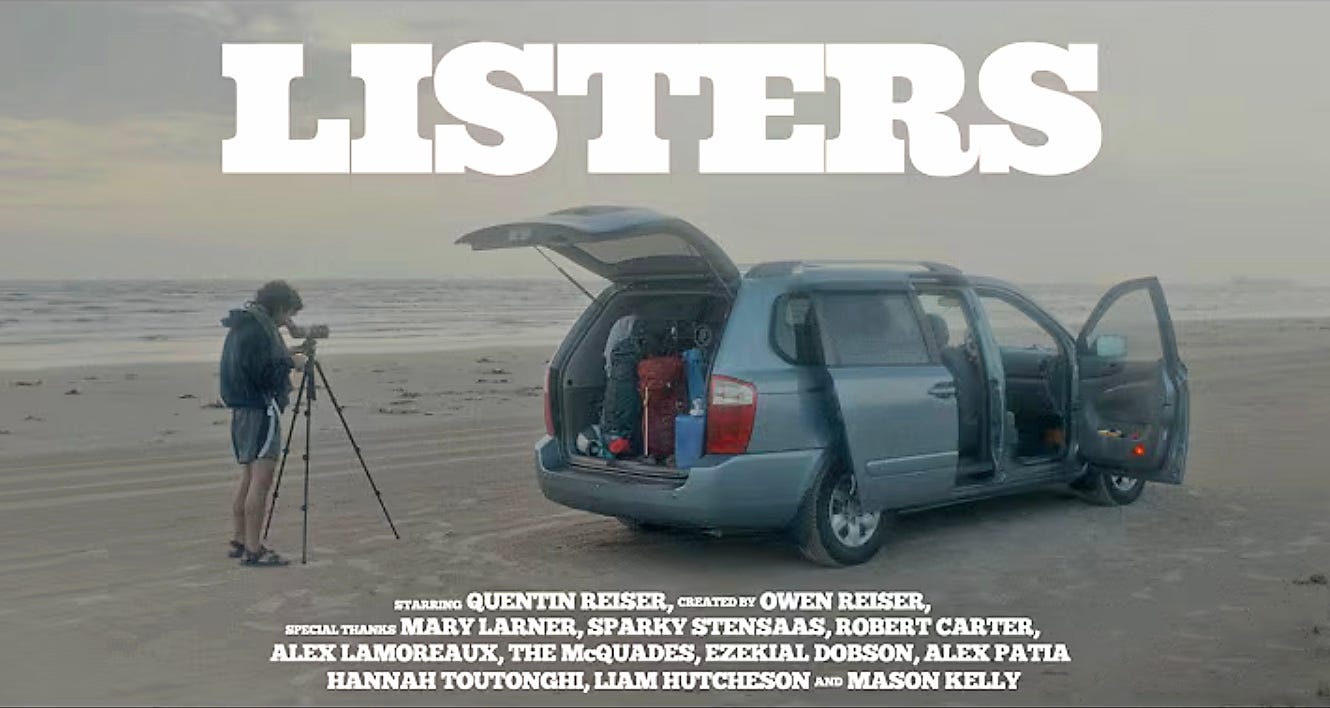The Forecast Calls for Monarchs
A Summer Digest of Butterflies, Books, Irreverence, and Contemplation
THE wind is fresh from the north. Asters erupt into purple. Monarchs drift toward Mexico. And we humans have much to learn about ourselves. So I bring you a late-summer digest of reading, listening, watching, and most of all thinking.
It begins with tips on the Monarch butterfly migration, which is now underway in parts of the U.S. and Canada. Then I offer some worthy diversions, not the least of which is a graceful and powerful book on the act of shepherding and an irreverent film about competitive birdwatching.
A Butterfly’s Journey
Lots of people in autumn seek a refresher on how a butterfly weighing less than a summer breeze goes about its business in Canada, the U.S., and Mexico. So here for you is a year in the life of an iconic migratory butterfly (in about two minutes of reading):
Most of us encounter the season’s first Monarchs in spring, when they drift around our farms and gardens and cities. Lucky us. From that point on, Monarchs mate and produce multiple generations through the summer. A crucial detail is that these spring and summer Monarchs live for an average of two to five weeks as airborne adults (which is a very long time for a butterfly).
Each Monarch generation proceeds along the routine butterfly life cycle: from egg to caterpillar to chrysalis to adult. But something unusual happens in the late-summer/autumn generation. Its Monarchs do not live for two to five weeks, nor do they reproduce. They instead fly all the way to the mountains of central Mexico (or other points south) and live for six to nine months (which is a crazy-long time for an adult butterfly). This is the migratory generation you’ll be seeing now and into autumn. A distinct western U.S. population leads a similar life, except that those Monarchs migrate to wintering sites along coastal southern California and northern Baja California, Mexico.
Once they arrive at their particular sites, the Monarchs mostly sit around on trees and wait out winter unfolding to their north. So dense is the concentration of Monarchs at the winter sites that the butterflies turn Oyamel Fir forests in Mexico a shade of orange visible from aircraft and satellites.
In February and March, the Monarchs break their celibacy, mate at or near the overwintering sites, and begin a journey north. But they don’t make it all the way back. Along their routes, the females encounter milkweed (in the genus Asclepias) and its close relatives—the essential plants on which she lays her eggs. After which, the migratory overwintering generation of Monarchs dies off. It is then up to the new offspring of the year (now living two to five weeks as adults) to continue the northbound journey. Reproducing along the way, the northbound Monarchs repopulate most of the U.S. and southern Canada in two or three generations—a massive, annual, continent-wide recolonization, something rarely seen among insects.
There you have it: the complete life story of a migratory insect, a life imperiled. For more on the Monarch, including a proposal to list this common butterfly as endangered in the U.S., consult my post titled “The Grace and Force of a Butterfly” (from which this summary is drawn). My podcast episode on Monarchs, titled “The Fate of the Monarch Butterfly,” includes an essay titled “Butterflies and Terror.”
The Salt Stones: Seasons of a Shepherd’s Life by Helen Whybrow
As it turns out, I’ve watched Monarchs float over the pastures and through the grand views of Knoll Farm, the 200-acre setting here in Vermont for Helen Whybrow’s latest book, The Salt Stones: Seasons of a Shepherd’s Life. It would be easy—and correct—to tell you that Whybrow writes close to the land, to nature, to community, and to human experience. A sheep farmer, a genuine shepherd, she writes with force and beauty and history—not only of the human bond with animals, but with one another. She’s a shepherd who with her husband Peter raised a daughter and stepdaughter into lives on and off the farm, and who nurtured her mother through dying.
But this book offers more. Whybrow brings us a pastoral stripped of idyllic mythologies: a year in a shepherd’s life—sweat, beauty, brutality. Every chapter, every nuance of a farm’s hundred seasons, is about something greater, not the least of which is how we experience loss. In a chapter with a vignette about a Monarch emerging from its chrysalis, Whybrow writes in parallel to what I myself often express here at Chasing Nature: how we perceive decline and extinction in a not-so-natural world. Whybrow write of two ways:
The first is ecological: a loss of vitality, complexity, and stability. This can be studied and measured, but it can also be perceived by simply listening and noticing. Nature has a voice that sings in different registers, and in those registers you can hear health or struggle, presence or absence. As a farmer, or anyone else who spends time daily on the same piece of ground, you can sense regeneration or decline.
The second way I measure diminishment is in the human experience: loss of beauty, of meaning, of pattern language. These also become more available to us as we watch and listen, take in what surrounds us. These are found in the words and languages of people who live by the land. “A lexicon of land-love,” to use Robert Macfarlane’s lovely phrase.
I’ve known Helen for more than 25 years. I’ve walked the farm and watched birds there with her. Although she didn’t set out to write a memoir, in her experiences close to nature, and in the force of her ideas, Whybrow embodies a life of dedication, self-awareness, love, and purpose. That’s worthwhile reading for anyone. (Also find
writing The Salt Stones: A Shepherd's Journal here on Substack.)LISTERS: A Glimpse Into Extreme Birdwatching
Two brothers from St. Louis who know nothing about birds set out across North America in a minivan to tally as many species as they can in a year. No ordinary road trip, and not a coming-of-age story, this is an irreverent and revealing documentary on competitive birding. One of the brothers, Owen Reiser, the principal filmmaker, brings us the beauty and absurdities of extreme birding in his first film. Its star is his brother Quentin, who is endearing, audacious, respectful of the birders he lampoons, and still humble in the presence of birds. That the Reisers refrain from cheap shots at competitive birders (who sorta have it coming) is among the film’s strengths. “It's irreverent and sincere in equal measure—a rare combination that makes for truly compelling documentary filmmaking,” Ann Johnson Prum, an Emmy-winning filmmaker specializing in nature, told me.
Along the way, the brothers encounter drug deals, birdwatching cheating, extreme mosquitoes, and sublime experience among rare and common birds. Their cinematography features crude camcorder field video, striking bird footage, creative graphics, and plenty of humor. It makes for two hours of compelling filmmaking and a long-overdue lampooning of birdwatching culture. Watch LISTERS here.
To Listen, Read, and Laugh
Among my most favorite podcasts, Threshold, now in its fifth season, brings us yet another masterpiece: Hark, an exploration of earthly sounds, a chorus for your senses—all of them. Threshold’s brilliant founder and executive producer,
, writes Letters to Earthlings here on Substack.So much poetry for me this summer, including from
, , and daily haiku from Kristen Lindquist. Moving me to tears now and then is poetry of land and companionship from Charles Finn, notably his book (with photographs from Barbara Michelman) On a Benediction of Wind. (Thanks to , who writes On the Commons, for pointing me toward Finn.)Yes, I know: I owe you a big essay on how we learn in nature. Fear not: it’ll arrive next here at Chasing Nature. This essay on learning has become a kind of manifesto. It’s a big deal for me—and I hope for you—so I’m giving it another round of thinking and revision.
Finally, some silliness from Monty Python and the Holy Grail about another kind of monarch (owing to a “farcical aquatic ceremony”) confronting an “anarcho-syndicalist commune.”







Timely post! Thank you! I saw my first Monarch of the season a few minutes ago after checking my mail. It lifted my spirits after it soared over the rooftop.
The full butterfly story revealed at last to we ordinary mortals. Thanks! And, I don't know if the pre-video ads rotate but I got one before Monty Python about the making of 3D geographic maps. First time I've watched one of those ads all the way through.